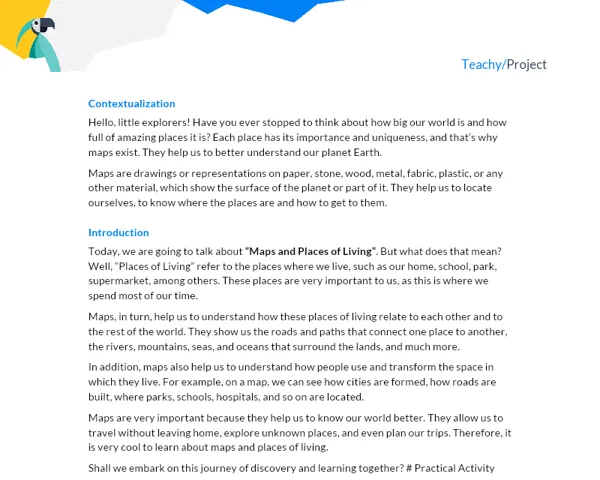Contextualization
Hello, young geographers! Let's embark on an incredible journey through the world of cultures and ethnic-cultural territories. But first, do you know what a territory is? And what does ethnic-cultural mean? Well, let's start with the territory!
Territory is the physical space that a community occupies, where they live, work, and develop. It can be a city, a country, a region, or even a neighborhood! And the most interesting thing is that each territory has its own identity, formed by its natural characteristics, culture, and the history of the people who inhabit it.
Now, let's talk about ethnic-cultural territories. Have you noticed that in different parts of the world people speak different languages, have different customs, eat different foods? That's because each human group, each people, has its own culture, which is formed by all these things! And when a group of people with the same culture occupies a territory, we call this place an ethnic-cultural territory.
Introduction
Our journey through ethnic-cultural territories will lead us to meet people from different parts of the world, their traditions, their way of living and relating to the space they occupy. We will discover that despite all the differences, there are many similarities between cultures, and that each one is unique and valuable!
Now, how are we going to explore these territories? We will use a very important tool in Geography: the map! The map is a representation of the geographical space, which helps us understand how territories are organized, where they are located, and how people relate to them. Through the map, we will be able to travel through different ethnic-cultural territories without leaving the classroom!
But that's not all, young geographers. Our journey will also be a journey of discovery and learning about ourselves and others. We will learn to value diversity, to respect differences, and to understand that, despite all differences, we are all part of a great territory: planet Earth! Are you ready for the adventure? So, let's go!
Practical Activity
Activity Title: Mapping Diversity: Getting to Know Ethnic-Cultural Territories
Project Objective:
Learn about the diversity of ethnic-cultural territories around the world, improve teamwork, research, time management, communication, problem-solving, and creativity skills.
Project Description:
In this project, each group of students will be tasked with choosing and exploring an ethnic-cultural territory in the world. Students will use their research skills to learn about the culture, history, geography, and traditions of the chosen place. They will also create a map of the territory, highlighting the most important information they have learned. Finally, they will present their findings to the class.
Materials Needed:
- Books, encyclopedias, and other reference materials
- Internet access for research
- Paper and pencil for map creation
- Colored pens, colored pencils, or crayons for coloring the map
- Cardboard or poster board to make the final map (optional)
- Glue and scissors (if needed to cut out images)
Step by Step:
-
Group Formation: Divide the class into groups of 3 to 5 students. Each group will be responsible for an ethnic-cultural territory.
-
Territory Selection: Each group must choose an ethnic-cultural territory to research. You can provide a list of options or allow students to choose freely.
-
Research: Groups should research the chosen territory, focusing on culture, history, geography, and traditions. They can use books, encyclopedias, and the internet to gather information. It is important that they note all sources used for reference.
-
Map Creation: Based on their research, each group should create a map of the chosen territory. The map should include information about the location of the territory, geography, main cities, tourist attractions, and the most important cultural and historical aspects.
-
Presentation: Finally, each group should present their findings to the class. The presentation may include displaying the created map, explaining the most important information learned, and some interactive activity to help the class better understand the culture of the chosen territory.
Remember, young geographers: the important thing is to have fun, learn, and respect the culture of others! Bon voyage!

